Adolf Hitler had a terrible impact on the history of the 20th century. But how did he become the dictator who plunged the world into catastrophe with a devastating war and the Holocaust?
Aimless life
A look at his curriculum vitae reveals how Hitler wandered aimlessly through childhood and adolescence and finally found a foothold in National Socialist ideology - how he founded the Nazi party and put an end to his life in 1945.
Countless articles, writings and books deal with the phenomenon of Adolf Hitler. Among the most important are the works of Joachim C. Fest ("Hitler"), Alan Bullock ("Hitler:A Study in Tyranny") and Ian Kershaw ("Hitler 1889-1936", "Hitler 1936-1945").
If you want to understand what Bullock calls "one of the most mysterious and unusual careers in modern history", you have to take a closer look at the life of the later dictator. However, at first there was nothing to indicate that he would succeed in determining the fate of the world. That's why Fest calls the first 30 years of life "an aimless life".
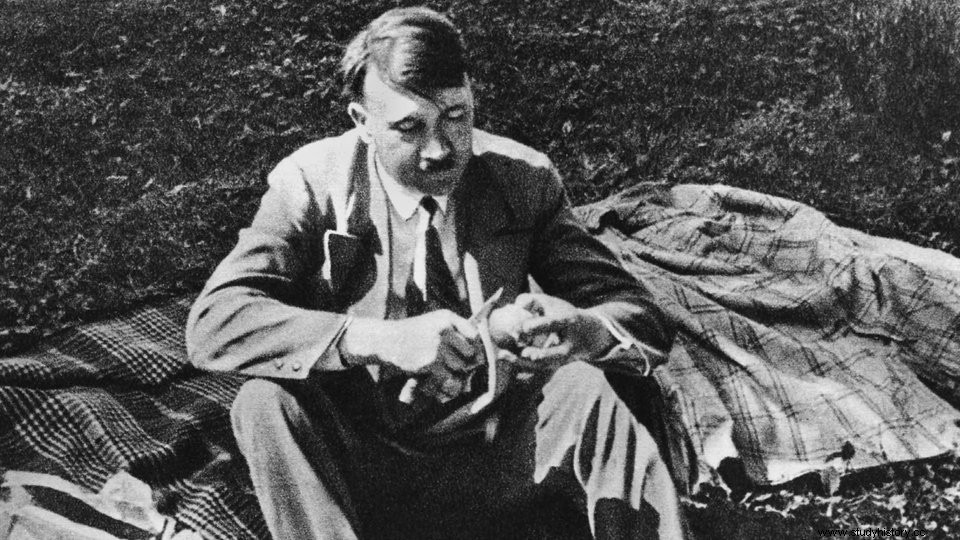
How did Adolf Hitler become a dictator?
This began on April 20, 1889:Adolf Hitler saw the light of day in Braunau am Inn, Austria. He grew up together with his sister Paula and the two half-siblings Alois and Angela. Hitler's mother Klara was a simple woman who worked as a housemaid for her future husband Alois Hitler.
Since he was born as an illegitimate child, he bore the surname Schicklgruber for almost 40 years. Two brothers were possible fathers:Johann Nepomuk Hüttler and Johann Georg Hiedler - their family name is probably of Czech origin and can be found in various variations in Hitler's home region.
Apparently there was an error when Alois changed his name because Hitler was entered as his new surname. Interesting:Adolf Hitler himself never knew who his grandfather was - and there were rumors that his ancestor could have been a Jew, which is now disproved. Alois Hitler was a customs official and was married to Klara for the third time. He died in 1903, she four years later.
Failing at school
Due to the many moves that his father's job entailed, Adolf Hitler attended several elementary schools, where he got good grades. When he then attended the secondary school in Linz, his grades deteriorated drastically, he failed several times and changed schools. But that didn't help either:Hitler gave up "Out of displeasure and moody drowsiness" (Fest).
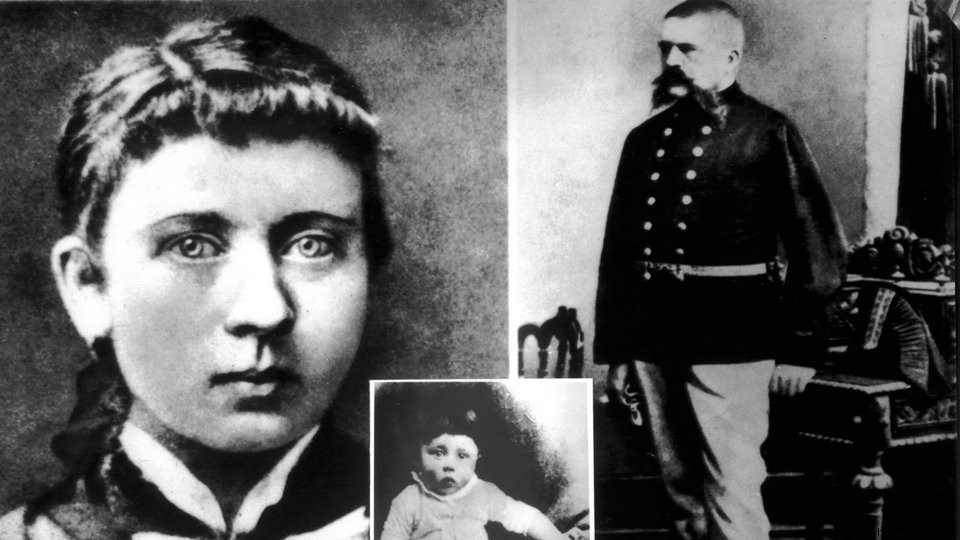
Adolf Hitler and his parents
However, he had experienced a decisive influence at the educational institution in Linz:In its nationally minded atmosphere, Dr. Leopold Potsch history. Pötsch's eloquence obviously made an impression on the young Adolf Hitler, according to Fest:"The sentiment against the Danube monarchy with its mixture of peoples and races, as well as Hitler's basic anti-Semitic attitude, undoubtedly came from there."
After leaving secondary school without a degree, he wanted to devote his life to art. His mother received a generous pension, so Hitler saw no need for regular work. Instead, he lived with his mother in Linz. There he occupied himself with folkish reading for the first time in 1905.
The three key characters
Hitler came into contact with one of his role models as a young man:he enjoyed going to the opera and was particularly enthusiastic about Richard Wagner's works. In 1907 he moved to Vienna and applied to the Academy of Fine Arts there, but without success.
After the death of his mother he went back to Linz for a short time, but returned to Vienna at the beginning of 1908, where he applied again to the academy and was again not accepted.
However, with his father and mother's inheritance and his orphan's pension, he was able to live well without working regularly - albeit only for a limited time. Around 1909/1910 was forced to live in homeless and men's hostels. Occasionally he earned money by selling his drawings and watercolors.
During this time he increasingly read anti-Semitic writings and dealt intensively with the "three ideological key figures of his formation years", as Fest puts it:the founder of the "pan-German movement", Georg von Schönerer, the Viennese mayor Dr. Karl Lueger and the composer Richard Wagner.
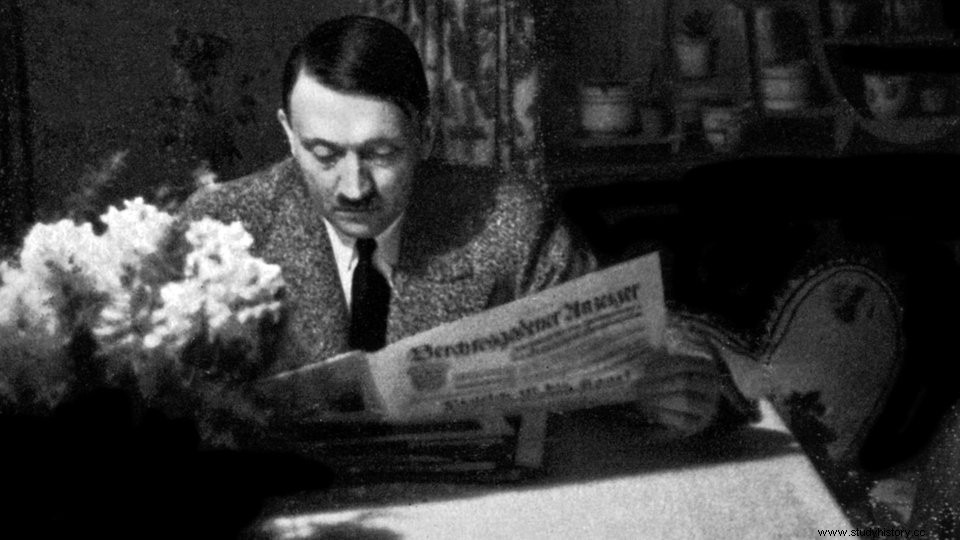
Adolf Hitler reading
He shared a similar curriculum vitae with the latter, for example the identity of his ancestors, which was unknown at the time, failure at school and hatred of Jews. Lueger also had anti-Semitic views, which he proclaimed eloquently like a tribune.
And Georg von Schönerer impressed Hitler with the program of the pan-German movement:the anti-Semite advocated turning the multi-ethnic state of Austria-Hungary into a nation in which only German-speaking people lived and which joined the German Reich.
Von Schönerer's supporters addressed him as "Führer" and greeted each other with calls of "Heil". The publicist Hannah Arendt classified him as the "spiritual father" of the later dictator.
War as a positive experience
In 1913 Hitler moved to Munich – probably also to avoid Austrian conscription. However, the police found him there. However, when he was examined in Austria, he was classified as unarmed. In 1914 he volunteered for military service in the Bavarian Army, although he was still Austrian at the time and only received German citizenship in 1932.
It was clear to Kershaw that in 1914, for the first time in his life, Hitler was fully committed to a cause. Or as Fest writes:"In contrast to the hurtful experiences of the past few years, the war was Adolf Hitler's great positive educational experience."
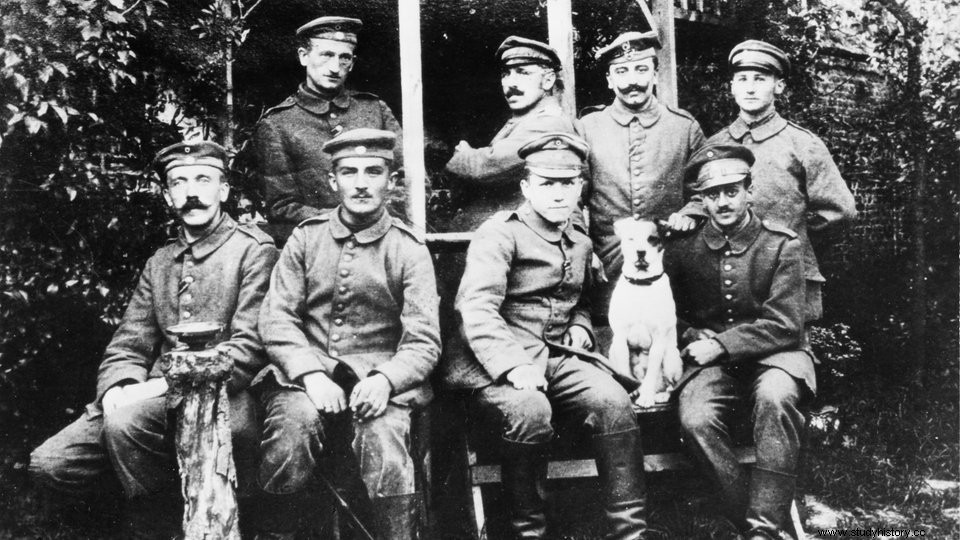
Adolf Hitler in World War I (1st row, left)
He remained in the Reichswehr until 1920 and after World War I took part in propaganda courses, which showed his oratory talent. In this context, he was taught by German national, pan-German and anti-Semitic scholars, including Gottfried Feder, who apparently laid the foundation for Hitler's urge to found a new party.
That happened quite quickly:as a liaison for a Reichswehr reconnaissance department, Hitler had to monitor political groups and thus came across the German Workers' Party (DAP), with whom he finally found a political home.
Their goals included rejection of democracy, hatred of Jews and Marxists, and retaliation for the Versailles Treaty. As a member, Hitler trained his rhetoric at party events and captivated the audience.
He worked on a 25-point program for the party, which was renamed the National Socialist German Workers' Party (NSDAP) on February 24, 1920. The following year he was given sweeping powers as their new chairman - his political journey to power began.
On the road to power
In 1923 chaos reigned in the Weimar Republic due to left-wing coup attempts, inflation and separatist movements. Hitler saw the right time to seize power.
On the evening of November 8, 1923, he and his supporters stormed a meeting in the Munich Bürgerbräukeller, which was attended by the Bavarian State Commissioner Gustav von Kahr and several ministers. Although he received the promise from Kahrs that he wanted to participate in a government led by Hitler. Hours later, however, von Kahr revoked this promise.
The next day, Hitler and thousands of his supporters still wanted to push through the overthrow. However, the Bavarian police foiled these plans by using force of arms to stop the putschists near the Feldherrnhalle. Hitler escaped and was arrested two days later. Along with other participants in the coup, Hitler was accused of high treason in February 1924 and sentenced to five years imprisonment.
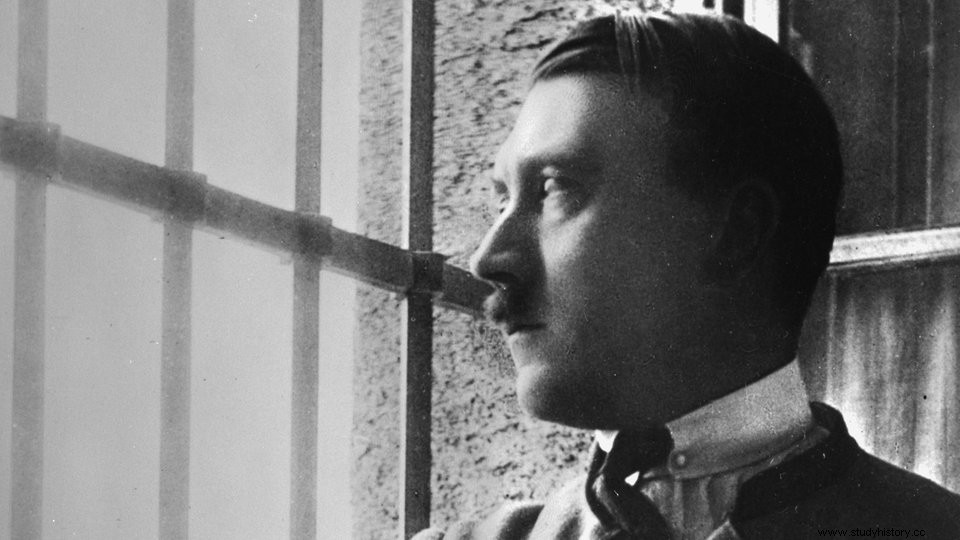
Hitler in prison
In the Landsberg fortress he wrote the first volume of his work "Mein Kampf", in which he presented in detail his anti-democratic and anti-Semitic ideologies and plans for the event of his seizure of power - volume 2 was published in 1926.
At the end of 1924 he was released early from prison. In 1925, the NSDAP, which had been banned after the coup attempt, was re-established. In the Reichstag elections of 1928, the party received only 2.6 percent of the votes, but from 1929 onwards it grew in popularity as the Weimar Republic began to falter as a result of the global economic crisis.
In 1931, Reich President Paul von Hindenburg met Hitler for the first time after the NSDAP had become the second largest party in the 1930 elections. On March 13, 1932, in the first ballot for the Reich President election, Hitler received 30.2 percent of the votes, and in the second ballot on April 10, he received 36.8 percent.
Hindenburg was re-elected to office with 53 percent. In August 1932, he rejected Hitler's demand to appoint him Chancellor - the NSDAP had become the strongest party in the Reichstag elections on July 31 with 37.3 percent. After Hindenburg had dissolved the Reichstag in September, elections were held again in November 1932.
This time, too, the NSDAP was the strongest party with 33.1 percent of the votes, even though it lost many votes. On January 30, 1933, Hindenburg appointed Hitler Chancellor.
Lonely life
While Hitler got to know and rhetorically seduced more and more people from the 1920s onwards, he had previously led a lonely life:he lived quite shyly, had hardly any friends, especially no female ones. In 1931 he was said to be having an affair with his niece Angelika Raubal, called Geli, who allegedly shot herself with his pistol in 1931.
Then his relationship with Eva Braun began, but he did not live it publicly. He married her just a few days before they committed suicide. When the German defeat was foreseeable in the last days of the war, Adolf Hitler shot himself on April 30, 1945.
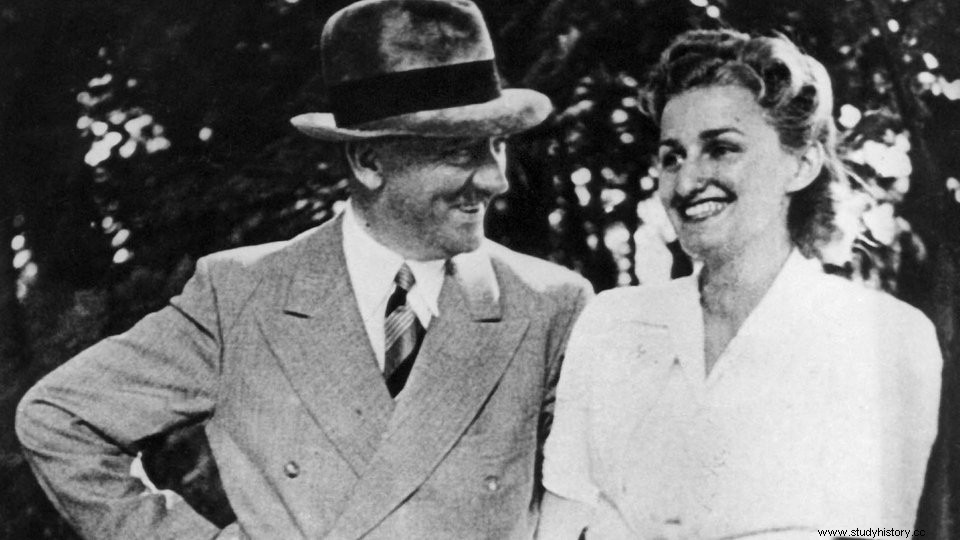
Adolf Hitler and partner Eva Braun
